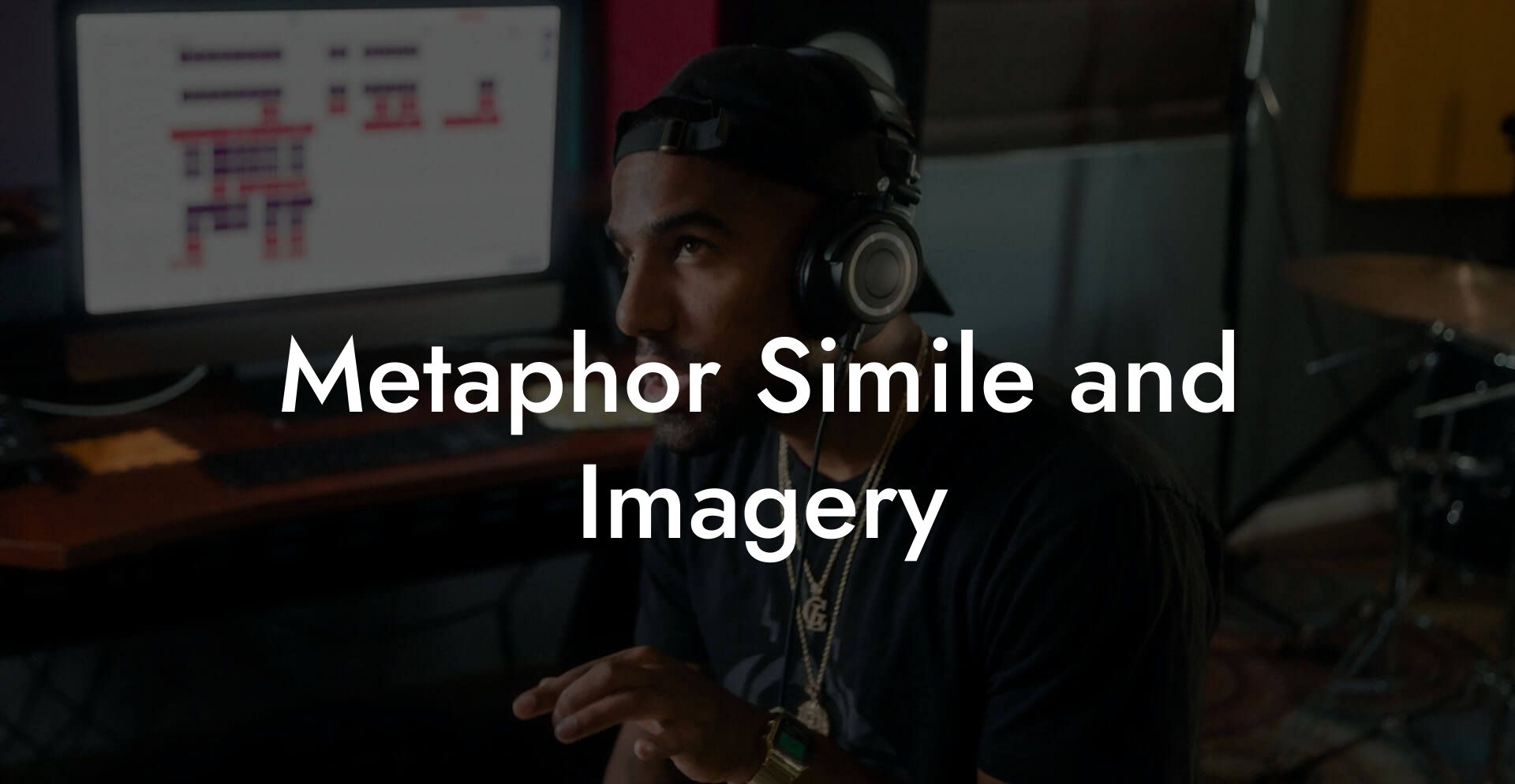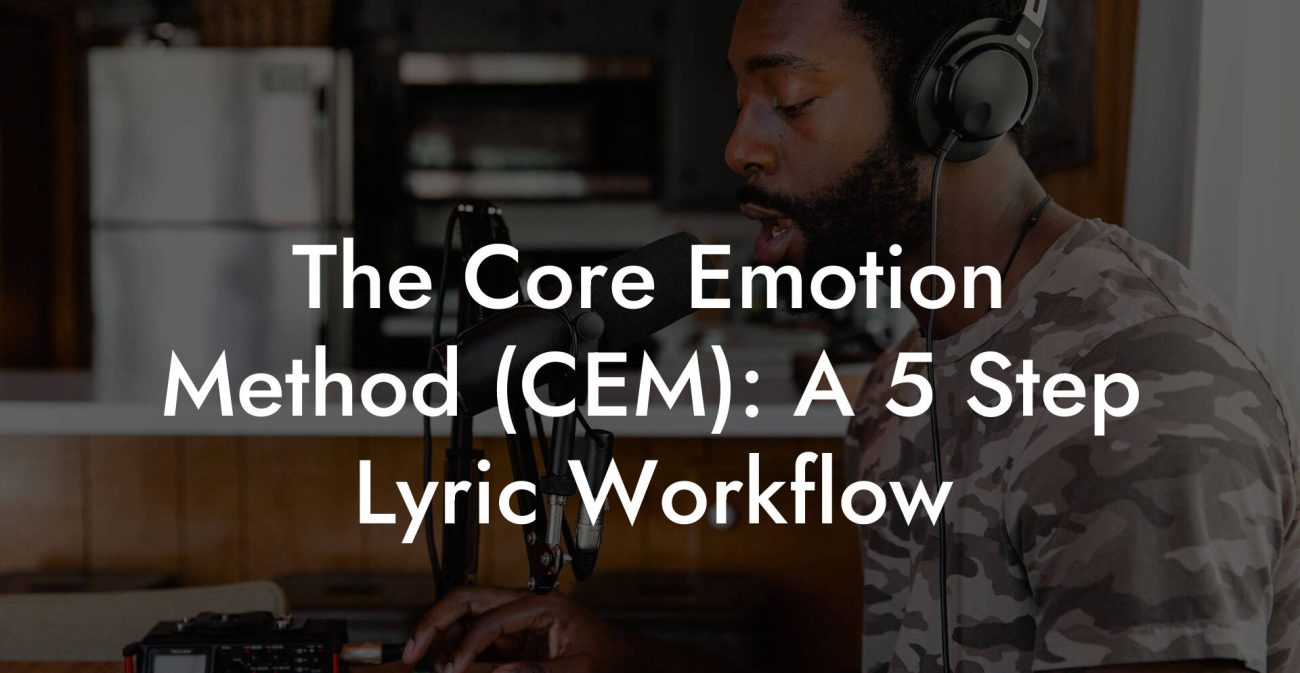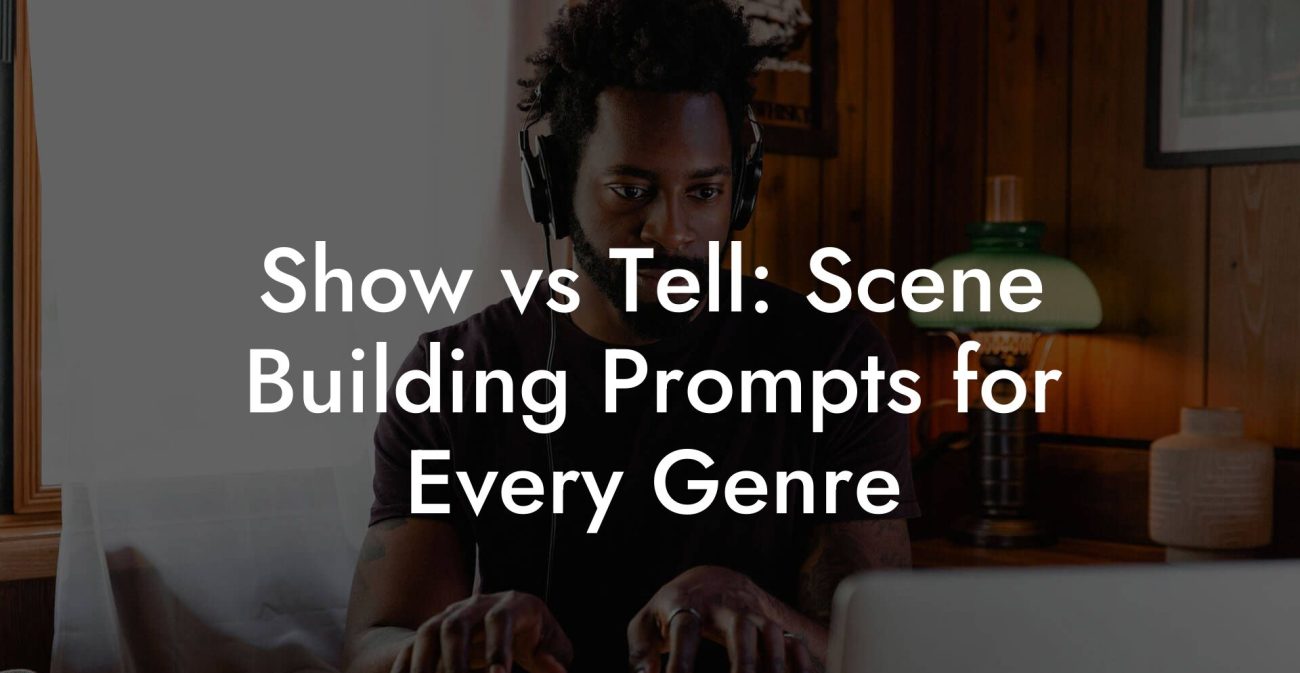Songwriting Advice
Metaphor Simile and Imagery

You write a lyric that reads fine but sounds invisible on a first listen. You want lines that make people stop their scroll, scream the chorus at 2 a.m. and text their ex a little too dramatically. Metaphor, simile, and imagery are your stunt doubles. They take plain sentences and make them cinematic. They make feelings concrete. They make your listener feel like they are living inside the line.
Quick Interruption: Ever wondered how huge artists end up fighting for their own songs? The answer is in the fine print. Learn the lines that protect you. Own your masters. Keep royalties. Keep playing shows without moving back in with Mom. Find out more →
Quick Links to Useful Sections
- What are metaphor simile and imagery
- Imagery
- Simile
- Metaphor
- Why these three matter for songwriting
- Metaphor and simile differences with examples
- Types of metaphors worth knowing
- Dead metaphor
- Mixed metaphor
- Extended metaphor
- Controlling metaphor
- How imagery works with the senses
- Show don’t tell with real world songwriting examples
- Why concreteness beats abstract emotion
- Common lyric problems and how imagery fixes them
- Problem: I say I feel empty but it sounds flat
- Problem: The chorus says I am strong but it sounds like a motivational poster
- Problem: The verse is full of lines that could be on greeting cards
- Before and after rewrites you can steal
- How to craft a metaphor that does not sound try hard
- Metaphor bank templates you can use now
- Imagery drills to get you writing better lines in minutes
- Ten minute object drill
- Five minute sense swap
- One minute simile storm
- Extended metaphor sprint
- How to avoid clichés and keep metaphors fresh
- Prosody and imagery prosody explained
- Balancing clarity and mystery
- Using images across sections for payoff
- When to use simile and when to use metaphor in a song
- Tools for editing your imagery like a pro
- Crime scene edit
- The cliché filter
- Image density pass
- Studio and performance tips for image heavy lyrics
- Examples from popular songs and what they do right
- Micro prompts you can steal when stuck
- Real world scenarios and how imagery helps
- On the subway after a breakup
- In the middle of a bad tour night
- A DM that was left on read
- Action plan you can use today
- Common questions about metaphors similes and imagery
- Can I use more than one metaphor in a song
- What is a good balance between image and statement
- How do I know if my metaphor is tired
- Are similes weaker than metaphors
- Songwriting checklist for image driven lyrics
- FAQ Schema
This guide is written for artists who want impact now. We will define the tools, show how to use them in songwriting, give examples that land, and provide repeatable exercises. Expect blunt examples, a few jokes, and real world scenarios like writing in a crummy tour van or replying to a ghoster after three margaritas. By the end you will be able to replace bland abstraction with images that stick.
What are metaphor simile and imagery
Let us start with the basics and break down the names so they stop sounding like vocabulary words from a high school test you barely passed.
Imagery
Imagery means language that creates a sensory picture in the listener. It summons sight sound touch smell or taste. When you sing The kitchen light looks guilty it is imagery. The listener can see the kitchen feel the late night light and maybe laugh because that line is oddly specific and true.
Simile
A simile is a comparison that uses the words like or as. Example I ran like a kid avoiding chores. The comparison gives you a clear image and a rhythm the ear can latch onto. Similes are great when you want a quick visual or a playful twist.
Metaphor
A metaphor is a bolder claim. It says X is Y. Instead of saying you are angry like a storm a metaphor would say you are a storm. Metaphors assert identity. They compress emotion into a single image and that compression is where the power lives.
Why these three matter for songwriting
Lyrics are instructions for the imagination. If the listener can picture the scene they will feel the emotion. Imagery gives the camera lens. Simile gives the quick lens filter. Metaphor gives the movie title. Use all three wisely and your song stops being a statement and becomes a place someone wants to live for three minutes.
Metaphor and simile differences with examples
People use these words like twins but they play different roles on stage. Here are clear differences with songwriting friendly examples.
- Simile compares with like or as. Example: Your goodbye landed like a flat note. It keeps the subject and the object separate. The comparison invites the listener to join the writer in making sense.
- Metaphor replaces the subject with the object. Example: Your goodbye was a flat note. The statement is stronger. It makes the image do the emotional work.
Simile can sound conversational and gentle. Metaphor can sound decisive and cinematic. Use simile when you want to keep a conversational voice. Use metaphor when you want the moment to feel inevitable.
Types of metaphors worth knowing
Not all metaphors are created equal. Some are dead on arrival and some carry the whole song.
Dead metaphor
These are metaphors used so often they feel like ordinary words. Examples are time is money or heart of stone. Dead metaphors can be useful when your song needs automatic recognition but are boring when you want surprise.
Mixed metaphor
This is a mistake where two images collide badly. Example: He sailed into my life like a freight train. That line confuses the listener and makes the song sound like a weird mash up. Mixed metaphors are funny in a chaotic way but not when you want clarity.
Extended metaphor
An extended metaphor runs through multiple lines or an entire song. Example: Make the relationship a house. Verse one shows the foundation. Verse two shows the wallpaper. Chorus collapses the roof. Extended metaphors let you develop an idea deeply and create a satisfying payoff.
Controlling metaphor
When the metaphor determines the entire language and sound of the song. Think of a song where every image points back to the same thing. This creates unity. It can be very powerful when done with restraint.
How imagery works with the senses
Imagery is not just about sight. Using other senses makes lines more surprising. If everything in your song is visual the listener will tune out after a chorus. Mix senses so each verse feels like a short film.
- Visual describes what things look like. The subway feels like a tin can of regret. Visual images help the listener place themselves in the scene.
- Auditory describes sound. Your laugh is a fire alarm at three in the morning. Sound images are excellent for hooks because they mirror melody.
- Tactile describes touch. His shirt smelled like road sweat saves you from saying he was on tour. Touch creates intimacy.
- Olfactory describes smell. Smell is the memory highway. A scent can land a listener in a room instantly. Use it carefully because it is powerful.
- Gustatory describes taste. Saying heartbreak tasted like stale coffee is oddly specific and effective.
Show don’t tell with real world songwriting examples
Everyone hears this advice. Few do it and fewer do it well. Show means replace an abstract claim with a concrete image.
Example show not tell
Before: I miss you and I am lonely.
After: Your side of the bed still cool at noon. I microwave two mugs and take one back to the dark sofa.
The after line does not say loneliness. It shows it with objects and actions. That is the difference between a shrug and a punch in the chest.
Why concreteness beats abstract emotion
Abstract words like sad alone or love are not wrong. They just do more work. The human brain stores emotions as experiences. When you give it a tangible image it can replay the experience. Tangible images trigger memory which triggers feeling. That is songwriting alchemy.
Common lyric problems and how imagery fixes them
Let us be honest. Many lyric problems have the same root cause. Below are common complaints and direct imagery solutions that work in the studio at midnight.
Problem: I say I feel empty but it sounds flat
Fix: Replace empty with a physical image. The fridge is a graveyard of takeout containers. Empty has weight and specificity.
Problem: The chorus says I am strong but it sounds like a motivational poster
Fix: Show strength through action not description. I lift my suitcase at the station and the station looks surprised. The action proves the claim.
Problem: The verse is full of lines that could be on greeting cards
Fix: Add object details and a time stamp. The night train sneezed at 2 a.m. gives a voice and setting. Greeting card lines are generic because they lack texture.
Before and after rewrites you can steal
Examples are the best teachers. Here are quick rewrites that convert bland to vivid. Use them as templates not rules.
Theme I am over you
Before: I am finally over you.
After: I moved your toothbrush to the guest drawer and the mirror forgave me.
Theme He ghosts me
Before: You disappeared without a trace.
After: Your last read receipt sits like a caution sign on my phone.
Theme New love
Before: I am falling for you.
After: You arrive at midnight with shoes full of summer and my heart borrows the sunlight.
Theme Small victories
Before: I am proud of myself.
After: I walk into my apartment and the light looks like a high five.
How to craft a metaphor that does not sound try hard
There is a thin line between fresh and forced. Follow these rules.
- Start with experience. Metaphors that come from something you noticed feel honest.
- Keep it simple. A single strong image beats three weak ones.
- Let the metaphor have consequences. If a chorus calls someone a storm mention wind or broken windows later.
- Avoid mixing emotional registers that do not match. Romantic metaphors in a bitter line can read as insincere.
Metaphor bank templates you can use now
When you are stuck copy these templates into your notes and fill them fast. They work for verses and hooks.
- Make something a household object. Example: The breakup is a burnt toaster. Use actions around that object.
- Turn emotion into weather. Example: Your regret is rain at noon. Add a response like I keep my shoes on to avoid the puddles.
- Turn a person into a city or place. Example: You are an abandoned amusement park. Name one ride and one smell.
- Use animal metaphors but be specific. Example: He is not a wolf he is a stray raccoon. The raccoon rummages and leaves trash as proof.
Imagery drills to get you writing better lines in minutes
These timed exercises break the brain’s overthinking habit. Set a timer. Do not be precious. The goal is interesting raw material not perfection.
Ten minute object drill
Pick one object in the room. Write five lines where that object performs different human actions. Example object mug. Line one the mug holds bad coffee. Line two the mug remembers your first date. Keep moving fast. Pick the best line and expand.
Five minute sense swap
Take one emotional line like I felt cold and rewrite it five ways using each sense. Cold could be a draft a cheap blanket a distant voicemail a metallic taste. Choose the oddest one and run with it.
One minute simile storm
Write as many similes as possible for one image. Example image heart. Write: like a locked mailbox, like a soda can crushed underfoot, like a subway map folded wrong. The weirdest will often be the strongest.
Extended metaphor sprint
Choose one object and spend twenty minutes mapping how that object represents the whole relationship. Make a verse chorus and bridge outline where each section reveals a new room in the metaphorical house or a new ride in the amusement park. Thirty minutes later you will have a scaffold for a song.
How to avoid clichés and keep metaphors fresh
Clichés make songs background wallpaper. Here is a process to spot them and make them new.
- Circle any abstract word like lonely, broken, lost, or free.
- For each circled word write three objects that would show the feeling instead of naming it.
- Pick one object and write two lines that describe an action around that object.
- Replace the abstract line with your new concrete lines and sing it. If it feels like an image your mouth can inhabit keep it. If not repeat the exercise.
Example: Abstract line I feel broken.
Objects: cracked vinyl record, dented mug, traffic cone in the rain.
Action line: I skip your song like a needle on an old LP. The image is specific and has rhythm.
Prosody and imagery prosody explained
Prosody is how words sit on the beat. You must make your image singable. A beautiful metaphor that is awkward to sing will be dead in the room. Speak your lines out loud then sing them. Match stressed syllables to strong beats. If a heavy word falls on a weak beat rewrite the line so the power word sits on the beat or get creative with the melody.
Real life example. You write Your lips tasted like regrets. Sing it. If the word regrets is clumsy on your melody swap it for a shorter word like salt or smoke. Salt is a strong singable vowel and keeps the image crisp.
Balancing clarity and mystery
Great imagery is specific but not total. You want to give the listener enough to imagine but not so much that there is nothing left to feel. Think of your lyric as a set of windows onto a room. Open one or two windows at a time. Let the rest remain dim. Leave room for listeners to insert their own memories. That is how songs become personal anthems.
Using images across sections for payoff
Plant an image early and revisit it later with a twist. This creates payoff and emotional ownership. The first time the image is simple. The second time it has new meaning. The best bookends make a listener sit up and say oh now I get it.
Example planting and payoff
Verse one: I keep your spare key on the windowsill like a sleepwalking apology.
Chorus: The windowsill is full now of small ghosts and spare keys. That line rewires the image from object to metaphorical population.
When to use simile and when to use metaphor in a song
Use simile for quick relatable lines and comedic effects. Similes are excellent in verses and bridges where you are painting and exploring. Use metaphor in the chorus when you want the hook to assert identity. A metaphor in a chorus reads like a headline. It is what fans will text their friends at 1 a.m.
Tools for editing your imagery like a pro
Editing is where songs either get polished or become a collection of half baked ideas. Run these passes on every lyric.
Crime scene edit
- Circle every abstract word and replace it with an image.
- Underline every passive verb and make it active.
- Mark any duplicate images. Keep the strongest one and remove the rest.
- Check for prosody. Sing the line. Does it sit on the beat. If not fix it.
The cliché filter
Scan for overused metaphors like heart of stone, light of my life, broken heart. Replace with an image that has texture and belongs to you. If you cannot find something personal borrow a strange object from a movie or a memory and describe it.
Image density pass
Count images per line. One strong image per line is usually enough. If a line tries to cram three images drop two and focus on one. Songs need room to breathe. Too many images make the listener dizzy.
Studio and performance tips for image heavy lyrics
Image heavy lyrics need space in the production. If every line is packed with details the vocal should be clear and the arrangement supportive not crowded.
- Give the verse sparse instrumentation so the listener can hear the details.
- In the chorus open the frequency band and add a small motif that echoes the main image.
- Use backing vocals to repeat a single word image to create a hook.
On stage deliver image lines as if you are telling a secret. Lower the volume a touch. Let the audience lean in. Intimacy is the quickest route from lyric to obsession.
Examples from popular songs and what they do right
We are not naming names for drama but listen for these moves in songs you know. Artists use imagery to create identity fast.
- Plant one strong sensory detail in the verse and repeat it in the chorus for payoff.
- Use a repeated simile as a rhythmic device that also carries meaning.
- Use an extended metaphor to keep the listener curious about how the image will evolve.
Micro prompts you can steal when stuck
Drop these into your phone notes. When writer anxiety hits use them as a prompt to get raw lines on the page.
- Name three objects on your bedside and write one sentence about each with a feeling attached.
- Describe the last text you did not reply to as a weather pattern.
- Pick a smell and write a line where that smell explains a relationship.
- Write a chorus that calls the central feeling a single object and repeat it three times with small changes.
Real world scenarios and how imagery helps
Here are everyday moments you will recognize and how to turn them into lines that matter.
On the subway after a breakup
Most people write I am sad. Instead write: The train announces names I used to care about and I trade my season pass for a postcard of your face. The moving train plus the exchange action creates a specific memory and rhythm.
In the middle of a bad tour night
Instead of I miss home write: My van smells like vending machine coffee and someone else s dirty jeans. That line brings the listener into your travel life and earns the emotion.
A DM that was left on read
Instead of You ignored me write: Your blue bubble turns gray and hangs like an exclamation point I do not want. The color detail is modern and the punctuation image is clever and singable.
Action plan you can use today
- Pick one verse from a song you wrote and circle abstract words. Replace each with a concrete image using the object swap method.
- Do a five minute sense swap on your chorus. If all images are visual add smell or touch to one line.
- Create one controlling metaphor for the song and test it in the chorus. Does it hold up repeated for three lines. If not simplify.
- Record a quick demo with the verse sparse and the chorus with a motif that echoes the main image. Sing as if you are telling a secret.
- Play the demo to two people and ask them this one question. Which concrete image did you remember. Fix until they name the one you intended.
Common questions about metaphors similes and imagery
Can I use more than one metaphor in a song
Yes but use them with purpose. Multiple metaphors that compete will confuse listeners. If you use two metaphors make sure they connect or that one appears only briefly. A single strong controlling metaphor often reads cleaner and has more emotional impact.
What is a good balance between image and statement
Aim for one clear image per line or two vivid images per four lines. That balance gives the listener enough to visualize without overwhelming them. Let the chorus be slightly more abstract if you need universality but anchor it with one concrete phrase.
How do I know if my metaphor is tired
If you can imagine the line on a greeting card it is likely tired. If it uses common phrases like heartbroken or shattered heart look for a fresher angle. If your line feels automatic test it on friends. If they do not react strongly rewrite it.
Are similes weaker than metaphors
No. Similes are a tool not a lesser cousin. They are quieter and often more conversational. Some songs need the approachable tone of a simile. Use both based on the emotional need of the moment.
Songwriting checklist for image driven lyrics
- Replace abstract words with sensory images.
- Keep one strong image per line.
- Plant an image early and revisit with a twist.
- Check prosody so image words land on the beat.
- Avoid mixed metaphors that confuse the listener.
- Test on three people and ask which image they remember.





